Finding the right financial forecasting tool can feel like navigating a labyrinth for most businesses. Every organization looks for the tool that matches its needs exactly, but finding the financial planning tools that fit best can be tricky. By doing so, businesses can make better-informed choices that lead to decisions aligned with their unique goals and objectives.
Identifying Business Needs
Even before delving into the options of financial planning software, it is imperative to identify the organization's requirements. Every business has something different to offer based on factors like size, industry, and growth objectives. For others, it could be the other way around, and they will be looking for a user-friendly interface. When businesses explicitly define these needs, they provide a solid foundation for identifying the right tool, which enhances financial planning processes.
Features and Functionalities
While evaluating the tools, look at their functionality and capability. They should include indispensable components like budgeting, cash flow analysis, and revenue forecasting. Look for features that empower scenario analysis, allowing organizations to model various financial scenarios. By analyzing decisions and their possible outcomes, organizations can leverage that capability for strategic decision-making.
Ease of Use and Accessibility
The usability of a tool is essential in determining its effectiveness. The tool must be something the staff and other related users can use and navigate easily with less training. User-friendly UI and simple functionality promote use across the organization. Cloud solutions remain just as relevant because they provide flexibility to work remotely and collaborate across departments.
Existing System Integration
Integration with the current systems makes financial forecasting tools a holistic solution. When selecting options, businesses should opt for those that integrate seamlessly with existing accounting software, ERP systems, and data sources. This integration effectively streamlines the data collection process by lowering manual data entry and eliminating errors. This, in turn, improves the accuracy and time required for the forecasting process.
Scalability for Future Growth
The selected tool must fit ideally for the future growth of the organization. Choosing a scalable solution can help to ensure that as the business grows, the tool will continue to deliver value. As needs change – adding new products, moving into new markets, or expanding the workforce — the forecasting tool should accommodate them. This allows it to run tools for a long time without changing them, saving time and money.
Evaluating Cost-Effectiveness
You have to consider your budget, as this is one of the most important factors in decision-making. Some tools are rich in features but also costly. The cost-to-benefit ratio is an important thing to consider. Businesses should go for the most cost-effective options available while keeping in view the functionality as well. Also, remember to factor in any potential hidden costs, like the cost of training or maintenance.
Security and Data Privacy
Safeguarding sensitive financial data is a key consideration of any company. First, choose a tool with appropriate security controls. Seek out solutions that provide gradual upgrades, encryption, several-factor authentication, and continual protection upgrades. Such features protect important information, allowing businesses and their stakeholders to be rest assured.
Asking for Recommendations and Reviews
Hearing from other businesses can be the difference between making the right choice and not deciding. Reviews and recommendations from peers in the industries can also help to shed some light on the performance of most of these tools in real time. This awareness assists in recognizing the strengths and weaknesses, leading to a tool that matches the unique requirements and expectations of the businesses.
Testing and Trial Periods
Providers offer trial periods or demos, which businesses should use before selecting the tool. Testing enables businesses to get a first-hand feel of how the tool performs in their operations. This direct approach gives better insight into its usability, compatibility, and efficiency. Trial periods also help navigate the vagueness of decisions by bringing to light potential challenges.
Conclusion
Many important considerations need to be made when choosing the right financial forecasting tool. Businesses will select a tool that can optimize financial planning by focusing on exact requirements, feature evaluation, ease of use, and integration capabilities. Highlighting scalability, affordability, and security and asking for recommendations assists in selecting the right platform. The right tool can help an organization make intentional decisions that will lead to growth and success in a constantly changing business environment.











